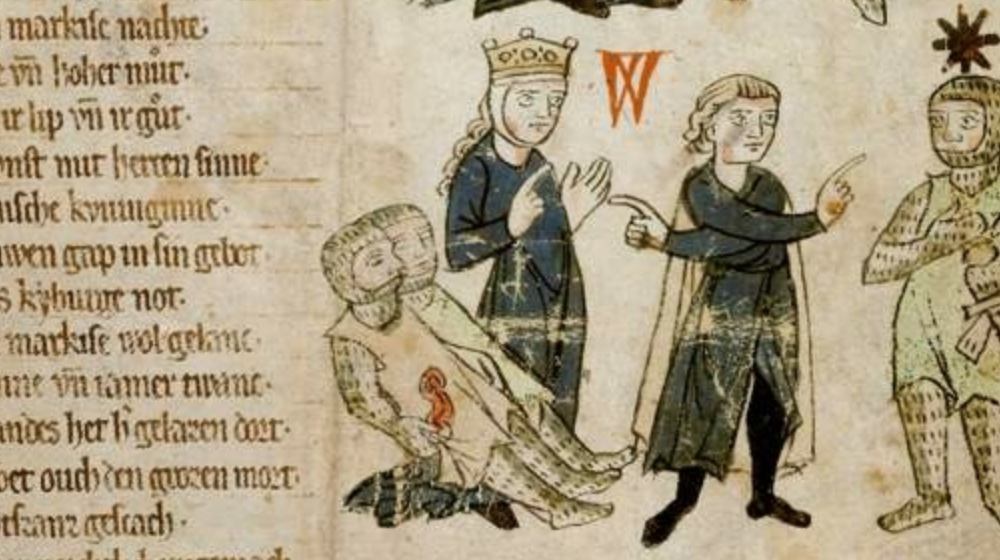
Featured image: A commenting narrator: detail from Wolfram <von Eschenbach>: Willehalm (Fragment) – BSB Cgm 193,III, [S.l.] Sachsen (Umkreis Quedlinburg/Halberstadt), 1270. Source: http://daten.digitale-sammlungen.de/bsb00012911/image_3
“Commentarial Forms in Literature” was a sister grant to “Practices of Commentary.”
Generously funded by the Deutscher Akademischer Austauschdienst (DAAD) through the PPP Programme for Project-Related Personal Exchange with Canada, “Commentarial Forms in Literature” was directed by Christina Lechtermann formerly of the Goethe-Universität Frankfurt am Main as well as Jeannie Miller and Markus Stock of the University of Toronto. It paired researchers in Frankfurt and Toronto to work on joint research projects related to commentarial forms in literature, and culminated in an online conference in 2021.Generously funded by the Deutscher Akademischer Austauschdienst (DAAD) through the PPP Programme for Project-Related Personal Exchange with Canada, “Commentarial Forms in Literature” was directed by Christina Lechtermann formerly of the Goethe-Universität Frankfurt am Main as well as Jeannie Miller and Markus Stock of the University of Toronto. It paired researchers in Frankfurt and Toronto to work on joint research projects related to commentarial forms in literature, and culminated in an online conference in 2021.
About the Project
This project dealt with literary texts that explore the power and interpretive potential of commentarial gestures. It examined the importance of the commentarial form historically in premodern literature, and theoretically as a constitutive component of the literary.
The project brought together scholars in Arabic, German, Jewish, and Romance medieval and early modern literatures at the University of Toronto and Goethe University Frankfurt/Main. The group investigated commentarial forms in literature as well as commentarial forms to stage literature as an ennobled mode of written communication.
The working hypothesis of the research project was as follows: when commentary is a major authoritative mode, its forms and gestures become available for artistic play on authority, and they surface in many different contexts.
- How do forms of commentary become tangible in storytelling?
- How do they determine the forms of poetry or hymns?
- How do they accompany literary texts, poems, and songs?
- How do they ‘authorize’ the text, communicating its status through paratext, metatext, and mise-en-page?
People:
| Participants in Canada: Prof. Elisa Brilli; Walker Horsfall, M.A.; Dr. Luca Lombardo; Prof. Jeannie Miller; Prof. Markus Stock; Prof. Patrick Thériault; Florian Müller, M.A. Participants in Germany: Andrea Baldan, M.A.; Jennifer Gerber, M.A.; Prof. Elisabeth Hollender; Prof. Christina Lechtermann; Prof. Christine Ott; Dr. Philip Stockbrugger. |
Previous events:
September 29th-30th, 2021: Forms of Commentary in Literature Virtual Workshop. See more details here.
Background image: British Library. Egerton MS 872, fol. 199r. Pentateuch with the Hafṭarot, Five Scrolls, and Rashi’s commentary, 1341.Source: http://www.bl.uk/manuscripts/FullDisplay.aspx?ref=Egerton_MS_872